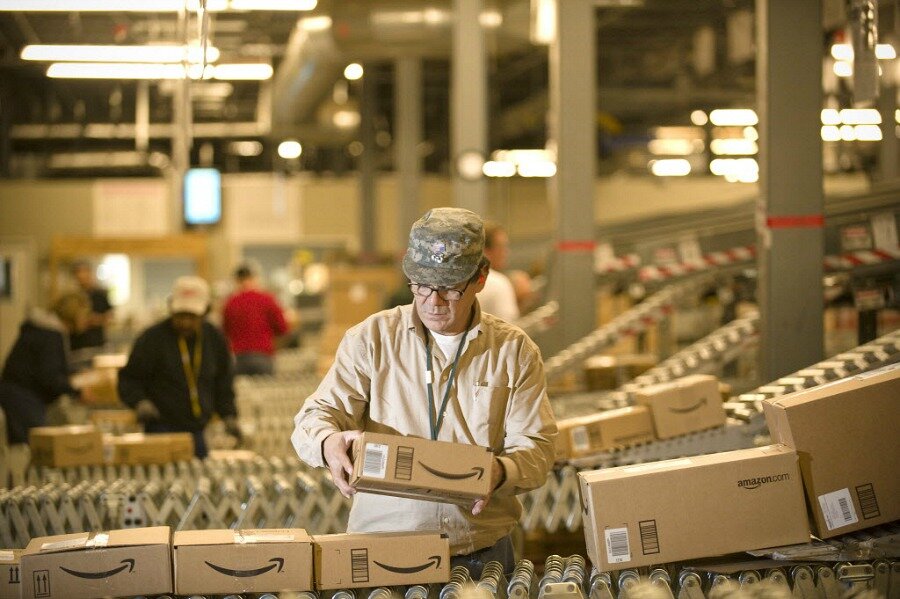In Amazon warehouse, robots outnumber humans 2 to 1
Loading...
This holiday season, the busiest workers at Amazon warehouses might not be its workers. The online retail company released about 15,000 robots across 10 of its US warehouses to help along shipments in what is the busiest online shopping period of the year.
Amazon is making use of Kiva Systems, a company it acquired in 2012, to build robots for its fulfillment centers. The company gave reporters a tour of its Tracy, Calif., warehouse, where it deployed about 3,000 robots to help transport packages to 1,500 workers.
Before that, the workers had to walk to their shelves; now, the shelves are brought to them. The orange, 32-pound super-Roombas can lift up to 750 pounds worth of shelf stacks and wheel them to the workers.
In a BBC investigation last year, an undercover reporter working as an Amazon warehouse worker in Wales was expected to walk 11 miles in a 10-hour shift and find an item every 33 seconds.
Hopefully, it’ll get better this season despite the gradual shift toward online shopping. Just two months earlier, the company hired 80,000 seasonal workers to help with the holiday rush, a 14 percent increase over last year’s seasonal hiring. And even though warehouse work should be more efficient, they say they won’t stop hiring during off-holiday seasons.
“We’re continuing to grow. Growth has always driven hiring,” Dave Clark, Amazon’s senior vice president of operations, tells the Associated Press. Mr. Clark says that the robots will cut centers’ operating costs by about 20 percent, but they won’t be able to do the more manual work of identifying damaged products, shelving, and packaging, so there will still be a need for human employees.
Despite the costs of deploying the robots and getting employees used to the new system, the move would be a way for Amazon to pick itself up after last year’s shipping debacle that left consumers giftless during Christmas. It’s an especially risky time of the year to lose out on customers; the holiday season accounts for a little over a third of its yearly revenue.
And it could very well be winning back its workers and saving their legs at the same time.







